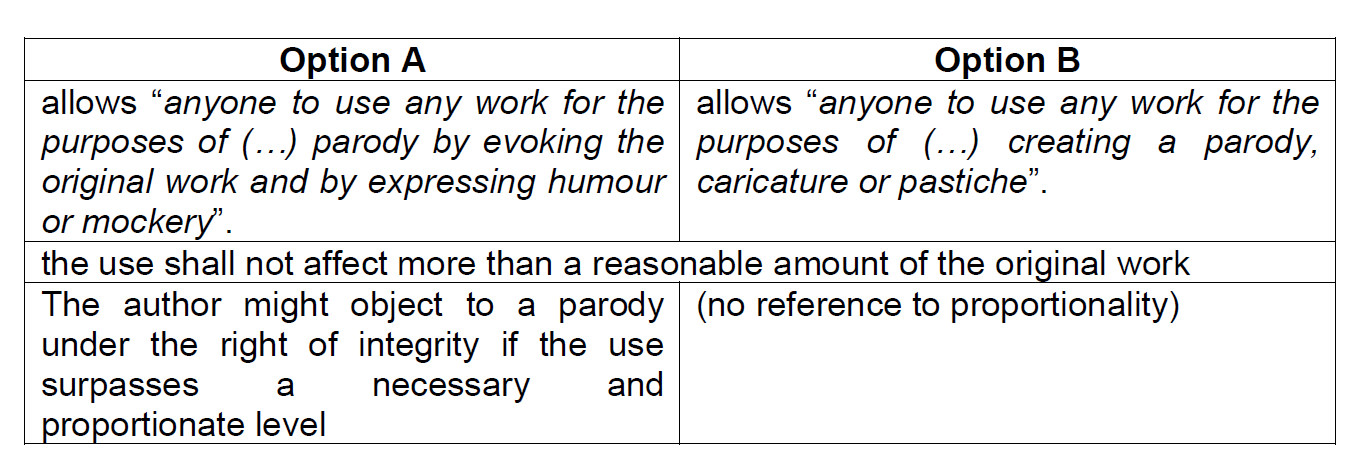 Following a long and winding procedure, Directive 2019/790 on Copyright in the Digital Single Market (CDSM Directive) and the SatCab 2.0 Directive (2019/789) were adopted last year. EU Member States started the implementation at different paces. (See CREATe and Communia’s datasets on national implementations.) Following a multi-event public consultation period in autumn 2019, the Hungarian Ministry of Justice and the Hungarian Intellectual Property Office published the draft of the implementation bill on 7 May 2020, and launched a one month consultation period.
Following a long and winding procedure, Directive 2019/790 on Copyright in the Digital Single Market (CDSM Directive) and the SatCab 2.0 Directive (2019/789) were adopted last year. EU Member States started the implementation at different paces. (See CREATe and Communia’s datasets on national implementations.) Following a multi-event public consultation period in autumn 2019, the Hungarian Ministry of Justice and the Hungarian Intellectual Property Office published the draft of the implementation bill on 7 May 2020, and launched a one month consultation period.
The text of the draft bill required significant polishing in multiple areas. As one example, the implementation proposal of the text- and data-mining (TDM) exceptions follows a different order than that contained in the directive. The general TDM exception (Article 4 of the directive) is covered first [in the new §35/A(1)], and the special TDM exception for research purposes (Article 3 of the directive) is covered second [in the new §35/A(1)], as an ‘alternative’ to the first exception. As another example, the compatibility of the ‘notice-and-stay-down’ regime with the existing ‘notice-and-take-down’ procedure of the Hungarian E-Commerce Act is unclear. Aside from these provisions, the proposal transposed the most notable elements of the directives almost verbatim, especially those relating to the SatCab 2.0 Directive, and the notorious Articles 15 (on press publishers’ right) and 17 (on liability of platforms) of the CDSM Directive. This blog post therefore focuses solely on the proposed transposition of Article 17(7) of the CDSM Directive on user rights or freedoms (see also here).
Parody and quotation are two exceptions harmonized in the InfoSoc Directive. They play a vital role in a digital ecosystem that also balances end-user interests. Still, they are optional in that directive: Member States have no obligation to introduce ‘quotations for purposes such as criticism or review’ under Article 5(3)(d) or ‘caricature, parody or pastiche’ under Article 5(3)(k). Hungary was one of the few countries that chose not to implement exceptions for caricature, parody or pastiche. Although the codification of quotation is long-established in Hungary, and effectively allows for criticism and review as well, the same is not true for parody. In fact, the lack of legislative recognition of this exception recently led to the denial of the parody defence of a media publisher who created a political caricature/parody of corrupt businessmen with the use of Superman’s iconic outfit.
The 2nd and 14th amendments of the draft intend to cure this gap. To do so, however, the legislative proposal sets out two alternatives, Options A and B, thus signaling the lack of consensus in the two competent drafting organs. While the CDSM Directive only required the implementation of a ‘user-generated parody exception’, both alternatives favour the introduction of a general parody exception (see the new §34/A). The main features of the options are as follows.

Option A focuses solely on parodies, and recommends including the Deckmyn requirements in the corpus of the Copyright Act. These requirements, as readers know, are ‘first, to evoke an existing work while being noticeably different from it, and, secondly, to constitute an expression of humour or mockery’ (Deckmyn, para. 20). Lacking any special justification for this wording, Option A either aims to omit the implementation of the caricature and pastiche or deems them to be part of the concept of parody.
Option B offers a better alternative. It recommends following the language of the InfoSoc Directive and leaving the interpretation of the concepts of parody, caricature and pastiche to the courts. In doing so, it complies with the wording of both the CDSM and InfoSoc Directives. The doctrinal boundaries of caricature, parody and pastiche are blurred. In many cases, individual uses might fit into two or more categories at the same time. Still, the concepts mentioned in the text of the law must have independent meaning. Therefore, an express reference to the three concepts or categories appears inevitable.
The drawing in Deckmyn was also ‘a political cartoon [in French: caricature politique] which falls within the scope of parody’ (Deckmyn, para. 11). Indeed, the Deckmyn judgment left unanswered the question of whether the two requirements mentioned above apply to parodies or caricatures, or to both. The justifications for Option A further add that requirements other than those listed in §34/A need to be taken into consideration, namely, those related to moral rights. In sum, skipping the codification of the Deckmyn requirements is a wiser decision from both practical and theoretical points of view.
As mentioned earlier, Option A recommended introducing a proportionality test within the framework of the right of integrity. Option B is silent on this, thus leaving the discussion of proportionality within the framework of the general rules rather than limiting it to moral rights considerations. Indeed, proportionality might be guaranteed through the intended changes to the right of integrity. Currently, §13 of the Hungarian Copyright Act can easily be interpreted as requiring prejudice to honour or reputation related to ‘modifications’ and ‘derogatory actions’ of the work; and authors might unconditionally object to all other ‘distortions’ and ‘mutilations’.
The new wording of §13(1) of the Act seems to reflect the international standard set in the Berne Convention much better. The Berne Convention was the first international copyright treaty to require signatories to protect the integrity of works in Article 6bis. Under the right of integrity, the Convention prohibits only such uses that are prejudicial to the honour or reputation of the author. The Hungarian reform proposal complies with this prerequisite – and thus inherently strikes the required balance of competing interests.
Finally, the codification of parody, caricature and pastiche with general effect and the lack of any legislative action related to quotation might have an undesired side-effect. In its current form, the proposal failed to clarify that the exceptions mentioned in Article 17(7) are user rights (see here). Such status will not allow for broader exceptions under the CDSM Directive. The three-step test and the general doctrinal frames of the exceptions continue to pose limits on their content. However, the directive’s wording – ‘shall not result in the prevention’ and ‘shall ensure’ – intended to guarantee, however, the binding nature and enforceability of these exceptions. The current wording of the Hungarian proposal fails to implement the ‘user right’ or binding nature of these exceptions.
An epilogue
On 16 June, the Hungarian Parliament accepted Act LVIII of 2020 on transitional rules and health preparedness following the cease of emergency situation. The new act’s Articles 323 to 327 introduced new rules to or amended the existing ones of the Copyright Act to allow for the reproduction, distribution, on-the-spot presentation/performance, communication to the public and adaptation of protected subject matters for the purposes of digital and distant education. The Act only requires prior authorization if the adapted work is used for purposes other than digital or distant education.Interestingly, the Act includes almost verbatim the provisions of Government Decree 125/2020 (IV.16.) on the same topic. Although this decree introduced transitional rules, it practically implemented Article 5 and guaranteed the smooth (and lawful) continuation of education in Hungary during the COVID-19 pandemic. By the acceptance of Act LVIII of 2020, and the amendment of the Copyright Act, the same rules will apply following the pandemic, too. This way, Hungary is the first country to formally implement Article 5 of the CDSM Directive.
[Editors note: a separate post on the Hungarian implementation of Article 5 of the CDSM Directive will be published soon on this blog]
________________________
To make sure you do not miss out on regular updates from the Kluwer Copyright Blog, please subscribe here.


